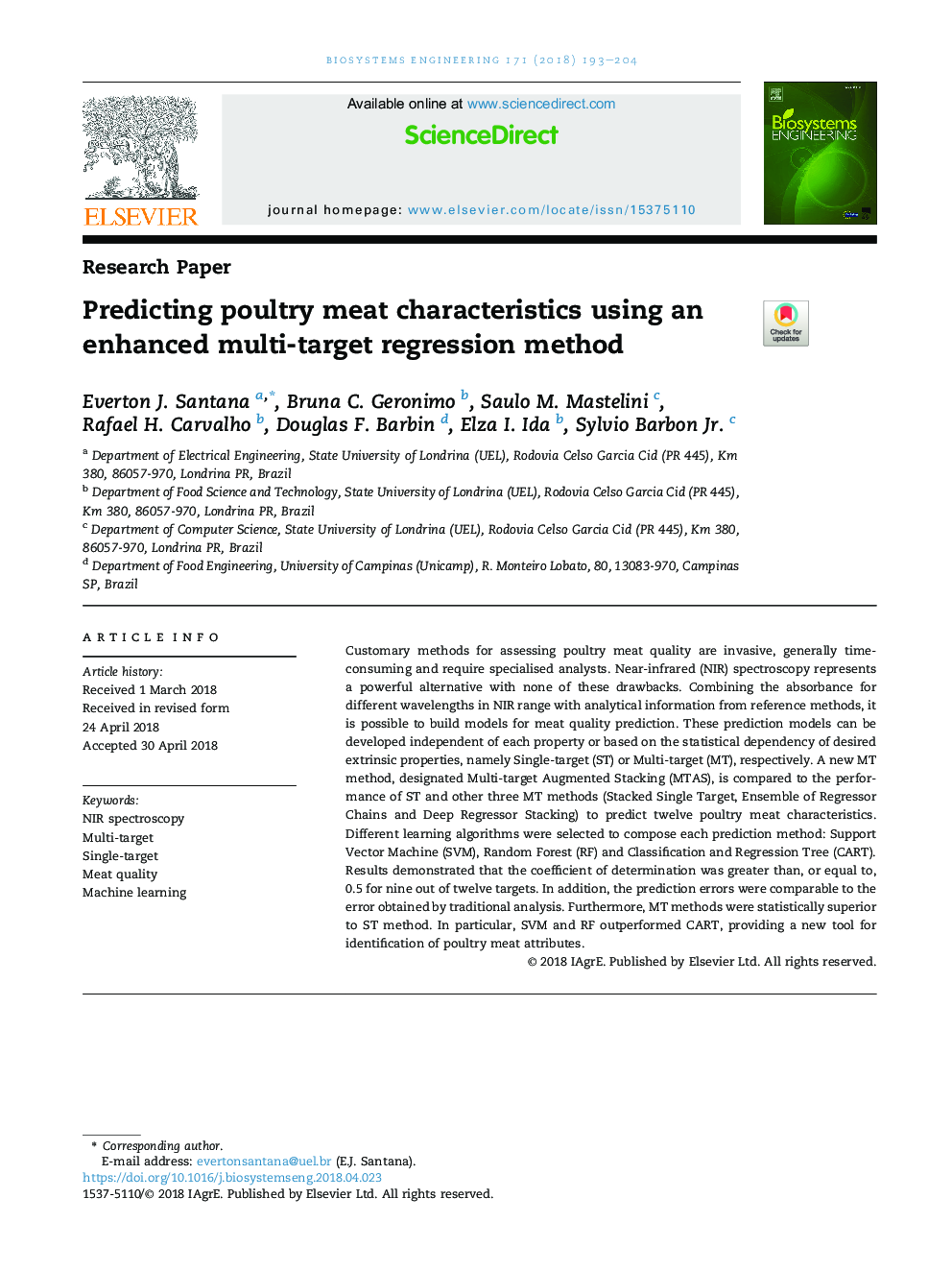| Article ID | Journal | Published Year | Pages | File Type |
|---|---|---|---|---|
| 8054678 | Biosystems Engineering | 2018 | 12 Pages |
Abstract
Customary methods for assessing poultry meat quality are invasive, generally time-consuming and require specialised analysts. Near-infrared (NIR) spectroscopy represents a powerful alternative with none of these drawbacks. Combining the absorbance for different wavelengths in NIR range with analytical information from reference methods, it is possible to build models for meat quality prediction. These prediction models can be developed independent of each property or based on the statistical dependency of desired extrinsic properties, namely Single-target (ST) or Multi-target (MT), respectively. A new MT method, designated Multi-target Augmented Stacking (MTAS), is compared to the performance of ST and other three MT methods (Stacked Single Target, Ensemble of Regressor Chains and Deep Regressor Stacking) to predict twelve poultry meat characteristics. Different learning algorithms were selected to compose each prediction method: Support Vector Machine (SVM), Random Forest (RF) and Classification and Regression Tree (CART). Results demonstrated that the coefficient of determination was greater than, or equal to, 0.5 for nine out of twelve targets. In addition, the prediction errors were comparable to the error obtained by traditional analysis. Furthermore, MT methods were statistically superior to ST method. In particular, SVM and RF outperformed CART, providing a new tool for identification of poultry meat attributes.
Related Topics
Physical Sciences and Engineering
Engineering
Control and Systems Engineering
Authors
Everton J. Santana, Bruna C. Geronimo, Saulo M. Mastelini, Rafael H. Carvalho, Douglas F. Barbin, Elza I. Ida, Sylvio Jr.,
